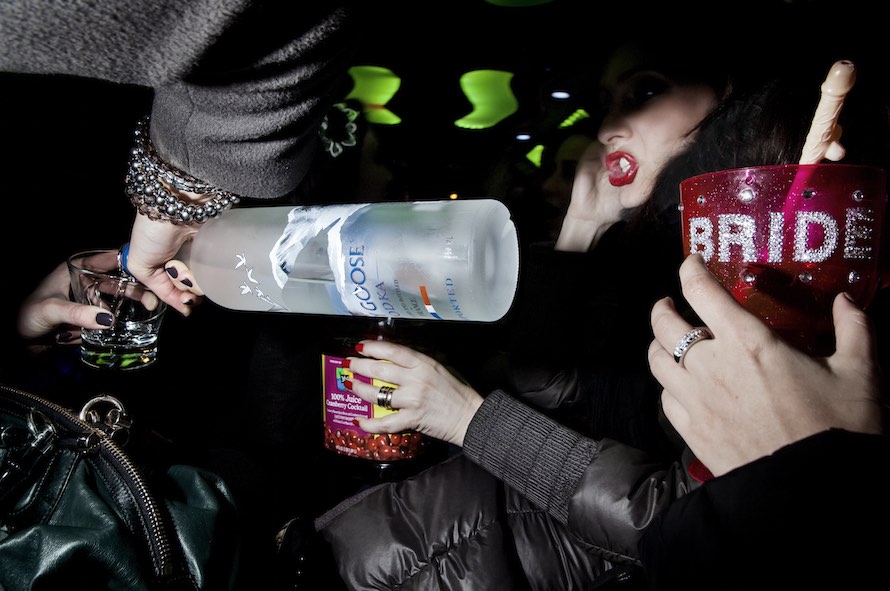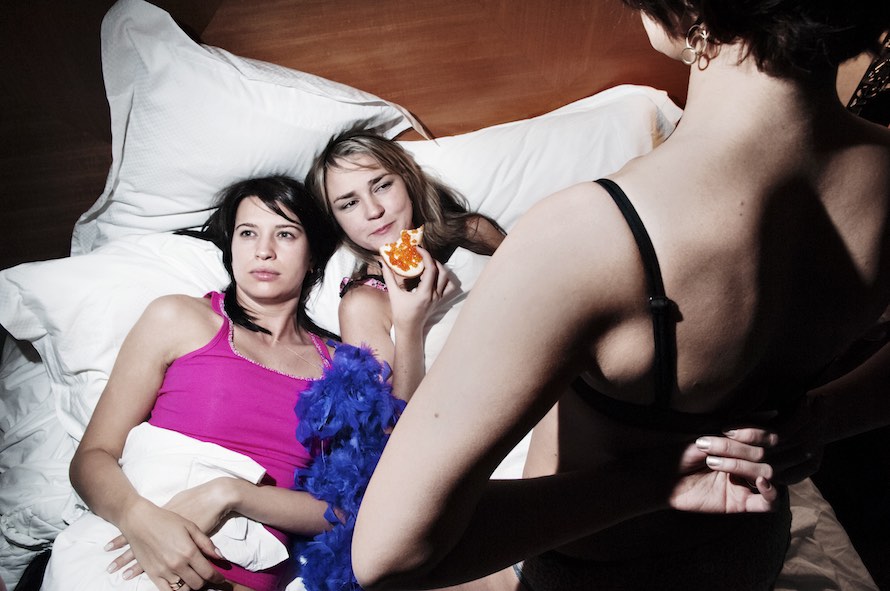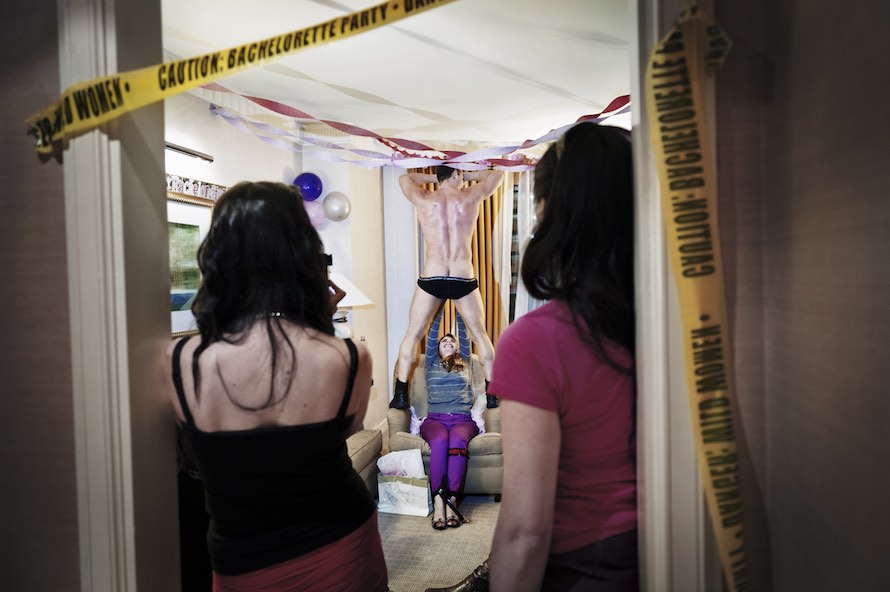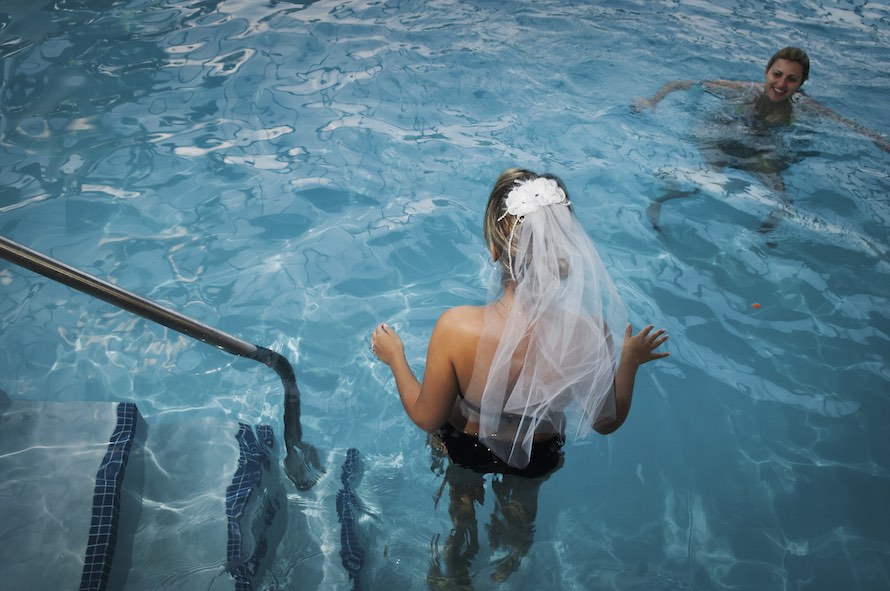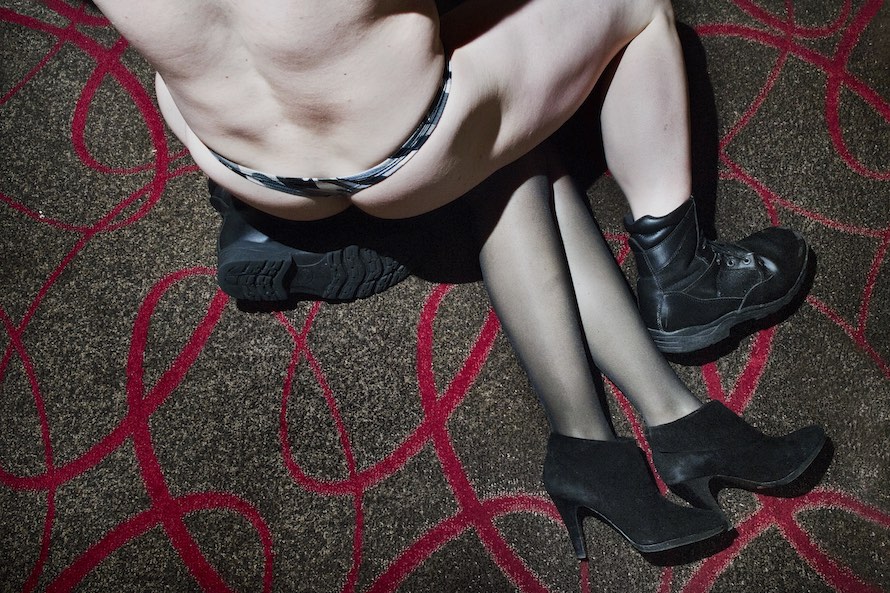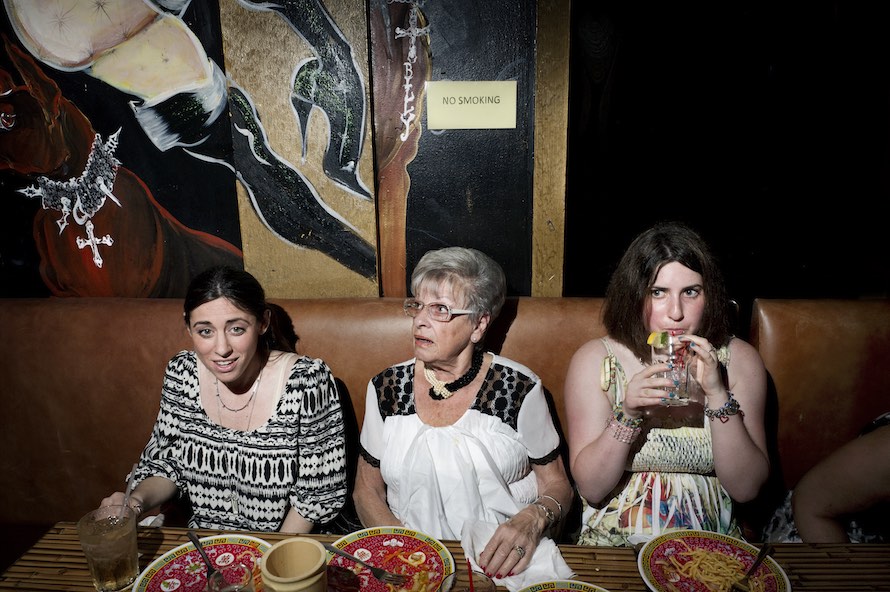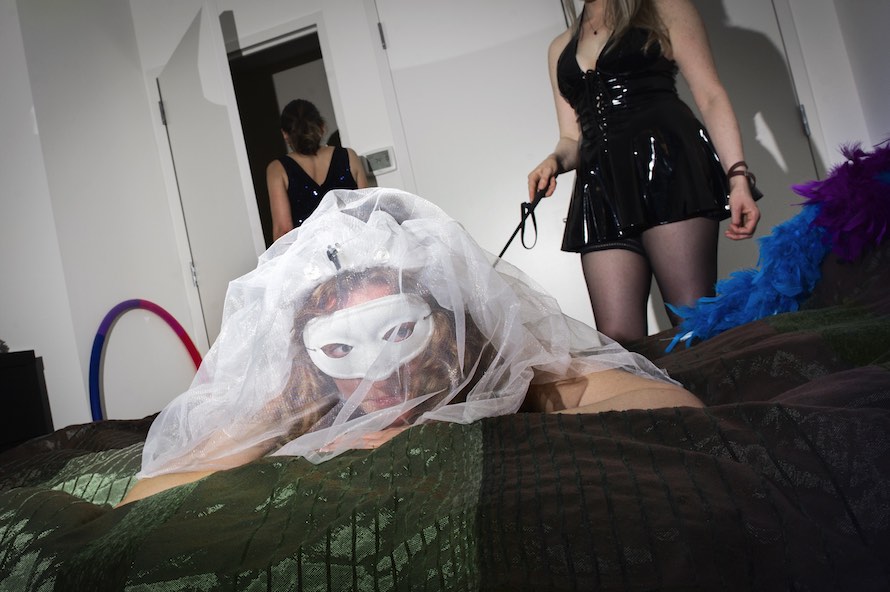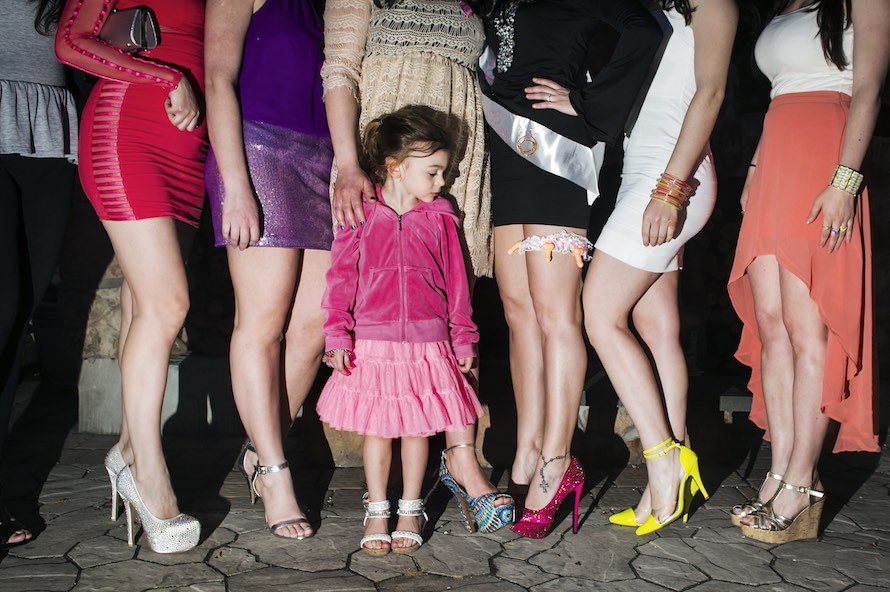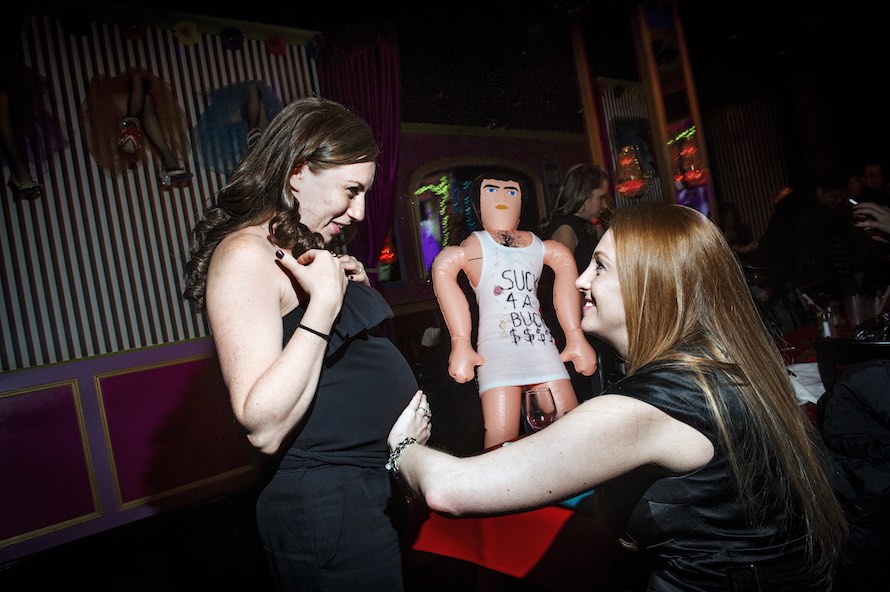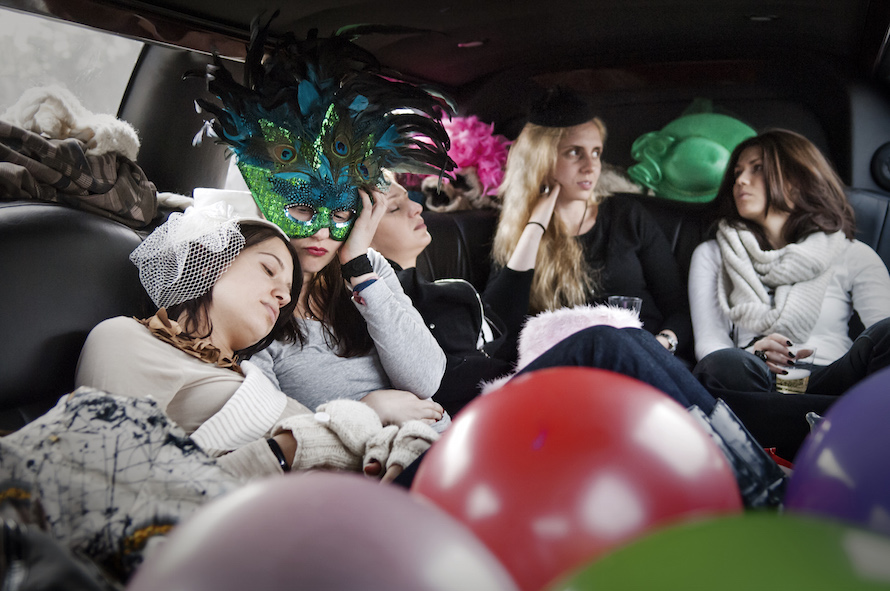You say in your artist statement that you set out to understand the ritual of the bachelorette party. What did you learn about the women involved?
Dina Litovsky:When I first started shooting the project I had somewhat stereotypical ideas of the bachelorette party. I considered it a crude, commercial ritual and was incredulous as to why educated, modern women bought into it. But as I started attending the parties these notions were severely challenged.
I think more than anything it can be a very liberating experience. For quite a few of the girls that I met, this day became a “get out of jail free card,” a time out from family, work, and even their own notions of “proper” behavior. Besides being fun, I found the ritual to be both challenging and comforting—individual boundaries are pushed within a safe zone of best friends.
TMN:You have a degree in psychology. How did that inform this series?
DL:I have always been interested in social performances and group behavior, which led me to take a closer look at the bachelorette party as a rite of passage. I wanted to discover the cultural motivations behind this ritual in addition to understanding it better on an individual level.
TMN:Did you come to any additional conclusions?
DL:I found that the bachelorette party provides a kind of a catharsis for the whole wedding process—which is usually quite long and stressful with most brides much more involved with planning and details than the groom. The bachelorette party happens at the very end of it and is the only time where the bride is encouraged to drink, party, and just let loose.
TMN:You’re married but didn’t have a bachelorette party yourself. Was that a deliberate decision?
DL:It wasn’t a deliberate decision or an act of rebellion. None of my close friends had had one and it wasn’t yet something I was very interested in. I got interested in bachelorette parties only after attending my first bachelorette party.
TMN:What was it?
DL:The first party was a (distant) friend’s celebration. Fifteen girls rented a hotel room, put on lingerie, popped open bottles of champagne, and danced on a bed sprinkled with rose petals. I was intrigued because a lot of the girls were married, some already had kids, and I have never seen that side of them. There was a genuine energy in the room and a kind of a delirium so I became very curious at the transformation. I took a few photos at that party and they were the beginning of the project (though none of them are used in the current edit).
TMN:Of all the bachelorette parties you’ve attended, what made one better or worse?
DL:This is a bit of a hard question, because the answer depends on whether you mean better or worse for images or better or worse as a party/event. That relationship was sometimes inversely proportional: that is, the parties that were more intimate (e.g. all the participants having a good time sitting around in restaurant talking) weren’t the ones that made for stronger imagery.
TMN:As a photographer, how do you react when you witness something that makes you uncomfortable?
DL:There weren’t really many moments that made me uncomfortable, although there were definitely unfamiliar situations that I had to take time and process. I usually do that by shooting through them and analyzing later. What I try to be more sensitive about is noticing what situations are uncomfortable for the girls themselves, then it’s a question of continuing to photograph or turning my camera off to put them at ease. It’s often a delicate balance of getting the image that I think is important without being overly intrusive, or embarrassing the subjects.
TMN:Do you ever set out to make the audience feel like a voyeur?
DL:I definitely think the photos are voyeuristic, especially for the male population, as they provide a glimpse into something most men haven’t personally witnessed.
I like that there is this voyeuristic quality to the images: this is a private world of the girls that the audience is seeing, so I want the viewers to feel the little guilty jolt of voyeuristic pleasure. The process itself is very candid. When I do shoot my presence is definitely known—I use a flash and get right in the middle of the action.
